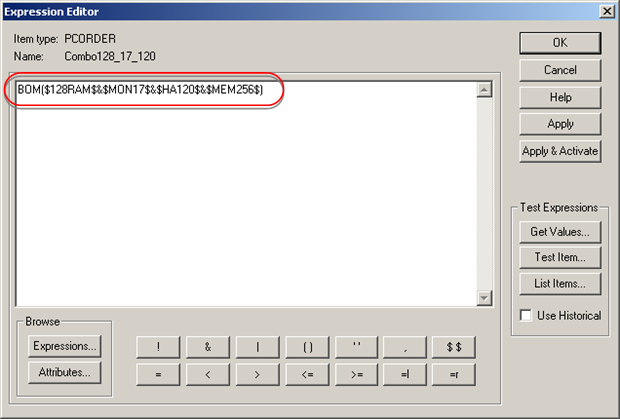Step 5. Write an Expression
There are three basic questions you can ask the Query engine.
| 1 | What are the values of all the attributes for an item in the same order you asked for them? |
| 2 | Does an item meet the expression criteria? |
| 3 | What items of a specified type match the expression? |

Operators include:
| Comparison Operators | |
| For TADB attributes | |
| = | Logical EQUALS operator. |
| < | Logical LESS THAN operator. |
| > | Logical GREATER THAN operator. |
| <= | Logical LESS THAN or EQUALS operator. |
| >= | Logical GREATER THAN or EQUALS operator. |
| =l |
Logical SQL LIKE operator.
Note: The appropriate information about acceptable wild cards and pattern matching characters can be found in SQL Server Books Online:
|
| =r | Logical regular expression comparison operator. |
| For non-TADB attributes | |
| = | Logical EQUALS operator. |
| =r | Logical regular expression comparison operator. |
| Up | |
| Boolean Operators | |
| ! | Logical NOT operator (placed before an expression) |
| & | Logical AND operator. |
| | | Logical OR operator |
| Up | |
| Other Syntax Tools | |
| ( ) | To group expression elements. |
| ' ' | To identify literal values |
| , | To form sub-string expressions. |
| . | To identify attributes |
| $$ | To identify references to named expressions. |
| Up | |
Note: There is no Not Comparison Operator. When an expression should be a not expression, a
! is placed before the expression.